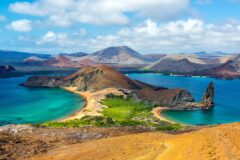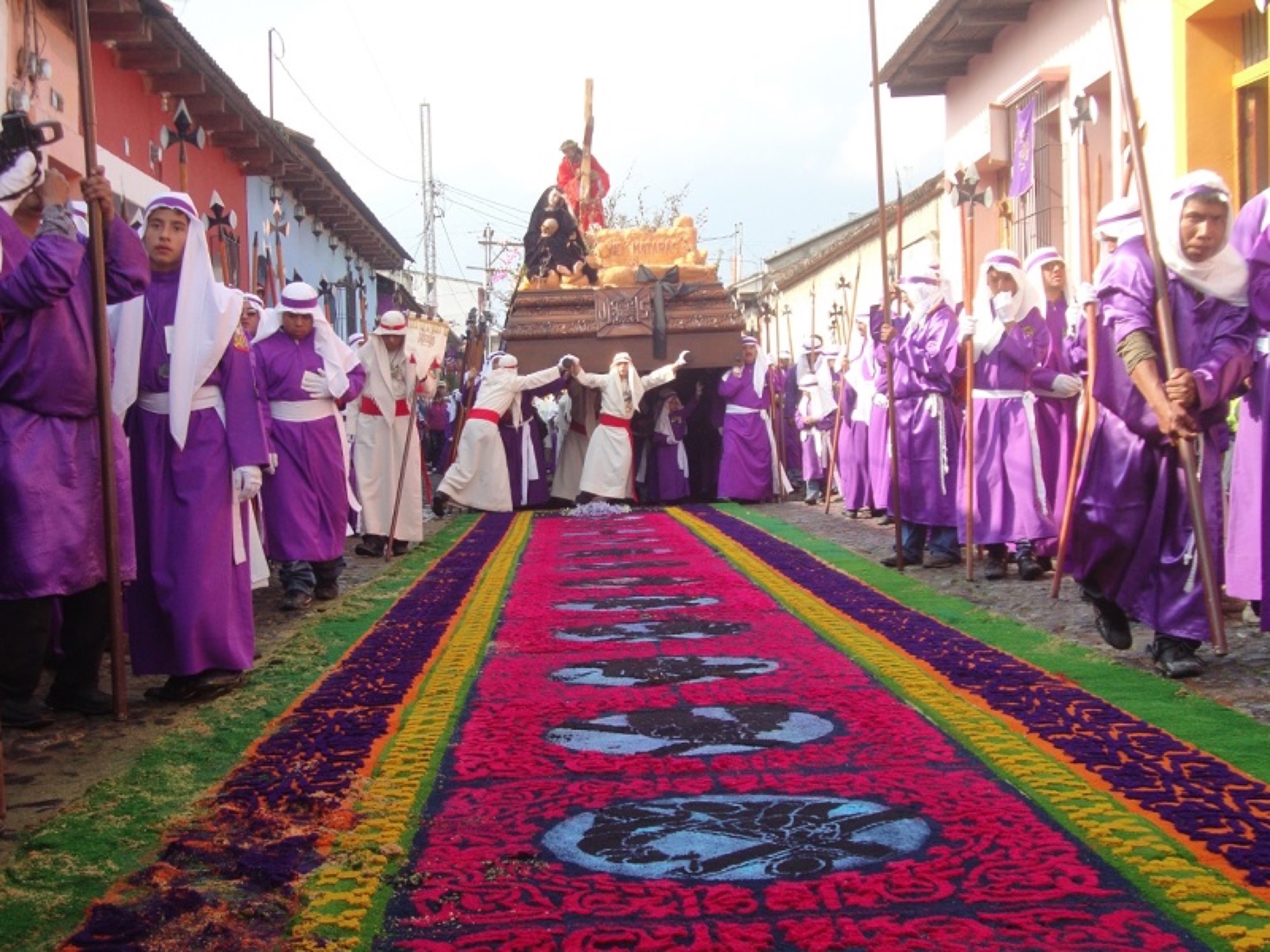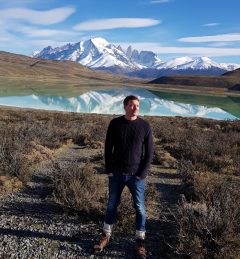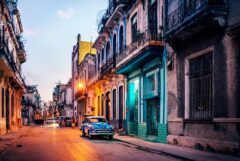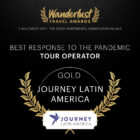Easter in Latin America

Easter in Latin America is not just a holiday, but a profound cultural and spiritual experience that transforms entire cities and towns across the continent. Known as Semana Santa, or Holy Week, these celebrations are among the most important holidays in the region, drawing millions of worshippers and travellers who come to witness centuries-old traditions brought to life through elaborate processions, devotional acts and lively community gatherings.
Why Easter is so important in Latin America
Latin America’s connection to Holy Week dates back to the Iberian colonisation nearly 600 years ago. As Spanish and Portuguese explorers introduced Catholicism to the continent, indigenous communities integrated their own customs, creating a unique blend of religious and cultural traditions that has evolved into some of the world’s most spectacular Easter celebrations. This fusion has grown to rival Christmas and New Year’s Eve in importance, with Holy Week representing the cornerstone of the Christian calendar for the region’s predominantly Catholic population.
What makes Easter in Latin America so extraordinary is how deeply the celebrations permeate daily life. Unlike in North America and Europe, where Easter is often just a day off work and a Sunday family gathering, in Latin America, Holy Thursday and Good Friday are mandated holidays. Schools close, businesses shut their doors, and entire families travel to participate in the religious processions or escape to beaches and tourist destinations. The streets fill with the scent of incense, the sound of traditional music, and the sight of religious images carried by devotees.
Unique Easter traditions across the region
Each Latin American country celebrates Easter in their own distinctive way, shaped by local history and indigenous influences. From the intricate sawdust carpets that line the cobbled streets of Antigua, Guatemala, to the unique crocodile-capturing customs of Costa Rica, the diversity of Easter traditions across South America and Central America is remarkable. Yet certain elements unite these celebrations: the passion plays that re-enact Jesus Christ’s final journey, the religious processions featuring ornate floats and statues, the traditional costumes worn by participants, and the special foods that mark this sacred time.
The Holy Week timeline
The week officially begins on Palm Sunday, commemorating Jesus’ entry into Jerusalem, and continues through Holy Monday, Maundy Thursday, Good Friday, Holy Saturday, and culminates on Easter Sunday with celebrations of the resurrection. Throughout these days, local churches open their doors for special masses, streets transform into outdoor theatres for biblical re-enactments, and communities come together in displays of faith that have been passed down through generations.
Whether you’re drawn to the spiritual significance, the spectacle, or simply the opportunity to see one of the world’s most authentic religious celebrations, Easter in Latin America offers an unforgettable journey into the heart of Latin American culture. Below, discover how different countries across the region celebrate this most important of holidays, from Mexico to Brazil, and from Costa Rica to Argentina.
Easter traditions across Latin American countries
Costa Rica
Easter and Semana Santa (‘Holy Week’) are some of the most important holidays in Costa Rica during the year. The passion processions re-enact Jesus’ journey to his crucifixion and take place in most towns, with the largest one being held in downtown San José. Traditions run deep in this part of the world, and the holiday is a time to spend with family and friends coming together, celebrating, relaxing or making and sharing traditional homemade food before the fasting starts on Good Friday.
One of the more interesting traditions during Semana Santa takes place in the Ortega de Santa Cruz village in Guanacaste, where brave men capture large crocodiles along the Palma River. This can take up to two hours, after which the catch is finally tied down and taken back to the village to be put on display. The reptiles are on show until Easter Sunday, after which they’re released, unharmed.
One of the largest Easter celebrations in the world takes place in Antigua, Guatemal,a with a combination of commemorations of the Passion, the Crucifixion and the Resurrection of Jesus Christ. Thousands of visitors come to take part in the processions and other religious festivities in the city. During the re-enactment of the Passion of Jesus Christ, large wooden floats are carried through the streets for up to eight hours. Each float is lavishly decorated and can weigh up to several thousand pounds. They require between 50 and 100 carriers each, who are replaced every fifteen minutes or so. It’s considered a great honour to carry the religiously themed floats, so there’s never a shortage of volunteers.
Extraordinary colourful carpets (alfombras) grace the streets. These are produced by residents and made of coloured sawdust, fruit, flowers, and pine needles for the processions to walk over. While everyone is extremely careful not to walk over the carpets before the processions take place, they get completely destroyed within minutes once the re-enactments are happening.
Nicaragua
Locals in Nicaragua live for the Easter, or Semana Santa, celebrations. Religious traditions are a blend of Spanish and indigenous rituals, which generally start on Palm Sunday, one day before the ‘Holy Week.’ Several processions and festivities take place throughout the week, which draw visitors to the towns and cities.
A process of great significance is the Donkey Procession, which is held on the morning of Palm Sunday. Either a person dressed as Jesus Christ or a statue is placed on a donkey and walked around town together with priests and parishioners. The procession is accompanied by philharmonic music. Crowds waving palm fronds to the man or statue on the donkey commemorates the triumphal entry of Jesus into Jerusalem, welcoming him as the messianic king.
Stations of the Cross processions take place every Friday during Lent to commemorate the story of Jesus’ journey to his place of death. During these processions, priests and parishioners will walk the streets while singing canticles. They will make fourteen stops along the way at houses in the town or city where altars are set up.
A typical indigenous tradition is San Lázaro, which takes place at the Santa María Magdalena parish church in Monimbó, Masaya. On the second last Sunday before ‘Holy Week’, owners will bring their dressed-up dogs to the parish church to show thankfulness or to ask for miracles to happen to their family, friends and even pets. The tradition refers to biblical passages in which dogs were said to lick the sores of Lazarus.
Peru
The most important day of the Holy Week festivities in Cusco, Peru, is Holy Monday. On this day, the Peruvians commemorate El Señor de los Temblores (‘The Lord of Earthquakes). It’s said that when a local brought out a figure of the saint from a local Cathedral during a powerful earthquake in 1650, the tremors stopped instantly. To celebrate this miracle, the people of Cusco organise a procession that leaves at 2pm from the cathedral and returns to the main square at around 7pm.
In Arequipa Easter Sunday is unique compared to most Peruvian cities through the burning of a statue of Judas, as a symbolic act of justice and punishment. This event is followed by large firework displays lighting up the sky.
Another popular destination in Peru for the ‘Holy Week’ festivities is Ayacucho. Biblical re-enactments and processions are followed by a large open-air craft market held on Saturday, including local food and live music. The festivities and parties take place all throughout the day and night and mark the resurrection of Christ.
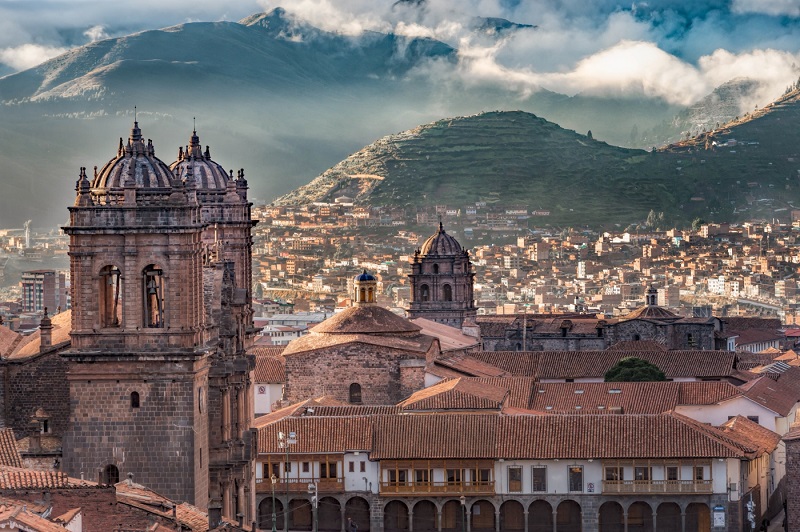
Brazil
With the Brazilian Carnival preceding the Easter celebrations, the period leading up to Easter is a busy one. Decorations, food and religious processions are prepared all over the country. ‘Easter Week’ rituals start with the blessing of the palm trees, followed by procession walks whereby worshippers carry statues of Mary and Christ around the towns and cities. Pacoca is a special Easter treat that people make from mixed nuts, which they hand out to visitors during these processions. Other typical Easter treats are chocolate eggs and Easter ring cake.
Similar to Antigua, handmade carpets are prepared for the processions, made of sawdust, flowers and even coffee. Carnival makes a brief reappearance on Easter Sunday when large gala carnivals commemorate the resurrection of Jesus Christ throughout the country.
The ultimate city to partake in the Easter festivities in Colombia is the white city of Popayán. The religious processions take place during ‘Holy Week’ and were declared an Intangible Cultural Heritage of Humanity by UNESCO, making it a popular Easter destination in Latin America. Besides the traditional processions, there is also a dedicated children’s procession as well as a religious music festival. Visitors can follow a trail that includes eight of the city’s most famous churches, such as the Cathedral Basilica of Our Lady of Assumption and the churches of San Francisco and San Augustin.
In the capital city of Bogotá, thousands of devotees climb the 3km up to the top of Monserrate on Easter Sunday. While most tourists and visitors make their way up using the train or gondola, worshippers make the journey on hands and knees as a sign of devotion, penance and gratitude. Once at the top, they visit the Sanctuary of our Fallen Lord and pray in front of the church’s image of a fallen Christ.
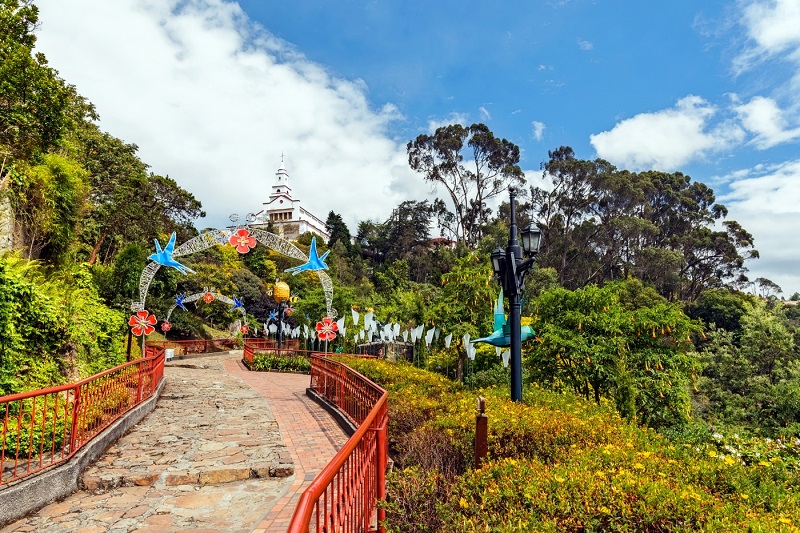
Ecuador
One of the largest Easter processions in South America is the Holy Friday’s Procession of the Penitents in Quito. Male penitents (cucuruchos) wear purple robes tied with a cord at the waist. They also wear a tall pointed hood, with only openings for the eyes, making them unrecognisable. During the procession, they’re followed by religious images, as well as thousands of devotees carrying candles and saying prayers along the way. The event is held in honour of Jesus’ sacrifice and as a symbol of remorse for the mistakes of mankind. It’s a very impressive event, with penitents wearing heavy wooden crosses, crowns of thorns on their heads or chains on their feet during the five-mile walk, to simulate the pain of Christ’s journey.
Food is an important aspect of the ‘Holy Week’ celebrations in Ecuador. A traditional dish during this week is Franesca, a traditional soup made of twelve different beans and/or grains, representing Jesus’ twelve disciples, salt cod, eggs, slices of banana, fried bread, cheese and peanuts. This is a favourite amongst the locals and also a great option for no-meat Friday.
While most passion plays in Latin America have their roots in the colonial period, in the Iztapalapa borough of Mexico City, its origin is a cholera epidemic inthe 19th century. The epidemic killed 5% of the population in Mexico City. At the time, residents visited an image of Jesus Christ at the Santuario de Señor de la Cuevita and promised to hold an annual procession in His name to end the suffering. Afterwards, only eight more people died from the outbreak, which is why the procession is still being held to this day. It’s also one of the most popular in the country, and is commemorated by thousands of devotees.
For a truly cross-cultural Easter experience, the special traditions of the Tarahumaras indigenous group in Copper Canyon are not to be missed. Due to the influence of Jesuit monks in the 1600s, Christian beliefs blended with local beliefs and traditions. ‘Holy Week’ in this area of Mexico is all about the battle between Good and Evil, featuring processions, temples decorated with pine branches, traditional costumes and dances accompanied by violin and guitar music.
Tailor-made holidays
Flexible, custom-made holidays to Latin America created to match your exact requirements: our tailor-made itineraries are as unique as the clients for whom they are designed.
Design my tripPapagaio
Your edit for Latin American inspiration
Our exciting range of articles on Latin America explore everything from iconic destinations and lesser-known cultural gems to delicious traditional recipes. You’ll also find exclusive travel tips, first-hand client reviews and the chance to get your personal questions answered by our travel experts.
View Extraordinary Inspiration